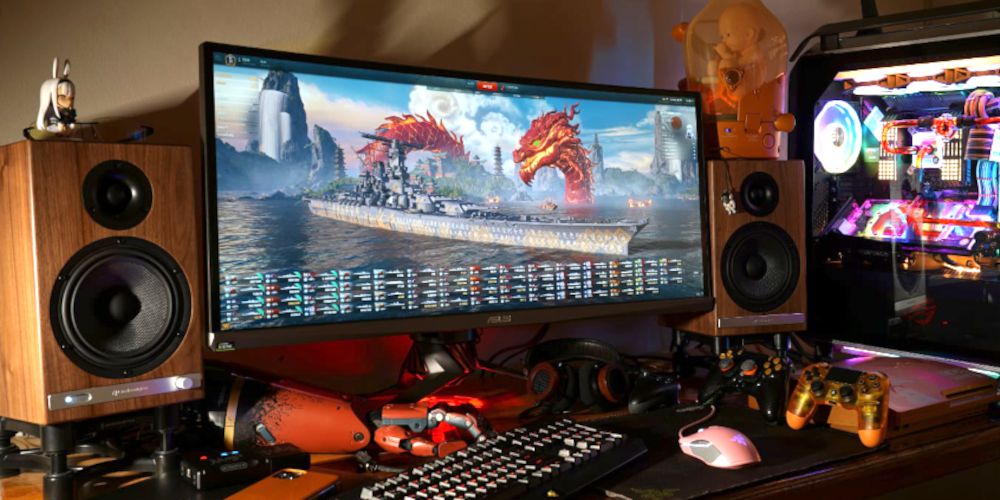Nothing about putting together a PC rig is exactly easy. Don't get me wrong: it's way easier than it used to be, but it still requires a little more thought than simply plugging a game console into the back of your TV.
Once you're finished actually building your PC, you might think you're finished, but you'd be wrong. There's still your monitor to pick. While this might seem like an easy choice, there's more to keep in mind than you may have thought.
1. Pick Your Panel: TN vs. IPS
When it comes to monitors, you have a choice of types of panels: TN (twisted nematic), IPS (in-plane switching), and VA (vertical alignment). For the purposes of a gaming monitor, you can rule out the last one, because they don't have great response times.
That leaves TN and IPS panels.
As a rule of thumb, if you're looking for a cheap gaming monitor, you'll be going with a TN panel. These don't look as crisp or colorful as an IPS monitor, but they offer excellent response times at a cheap price.
While you can get an IPS monitor with a good response times (that's 4ms or less), you'll be paying more.
2. Resolution: How Many P?
This is a relatively easy decision to make, considering everything else, but it's still worth spending time on. Which resolution should you choose?
A 4K monitor can look great, but if your graphics card can't handle 4K resolution, your games won't look great. Meanwhile, a 1440p monitor at the same size will still look nice and crisp while being much easier for your graphics card to drive.
This is one area where you'll want to do your best to match the monitor to what your PC can handle.
3. Refresh Rate vs. Response Time
Aside from resolution, there are two main numbers that matter when it comes to buying a gaming monitor: response time and refresh rate.
Response time is how fast the pixels can switch between colors. The lower this number is, the faster your monitor will respond to the game.
Refresh rate is how many times per second your monitor completely redraws the picture. Most monitors support 60Hz refresh rates, though more gaming focused monitors come in 120Hz, 144Hz, or even higher refresh rates.
These let you reap the rewards if your graphics card is capable of running a game at 120 FPS or higher.
These will cost you more, especially if they use Nvidia G-Sync or AMD FreeSync, both of which sync the graphics card and monitor redraw across changing framerates, but they're definitely worth it.
4. How Wide Do You Want?
When it comes to TVs, there's only one aspect ratio worth considering: 16:9. This is because basically any modern TV show looks great in 16:9, even if it's a more cinematic style that will be slightly letterboxed. Films will need to be letterboxed, but not as much as they would on a 4:3 TV.
Most monitors these days are 16:9 as well, but you can go wider if you want. The advantages here are mainly for productivity purposes in that you can fit more windows side by side.
That said, more and more games are adding widescreen support, letting you see more on either side in games, so a wider monitor is worth considering.
Looking for a Gaming TV Instead?
Maybe you're not looking for a monitor. Maybe you're looking for a TV. This is obvious for consoles, but even if you mainly game on your PC you might still be better off buying a TV instead of a monitor.
This is especially true if you don't want to use a separate set of PC speakers or you want to kick back on the couch with a controller.
Buying a TV means considering a whole different set of specs and options compared to buying a monitor.
